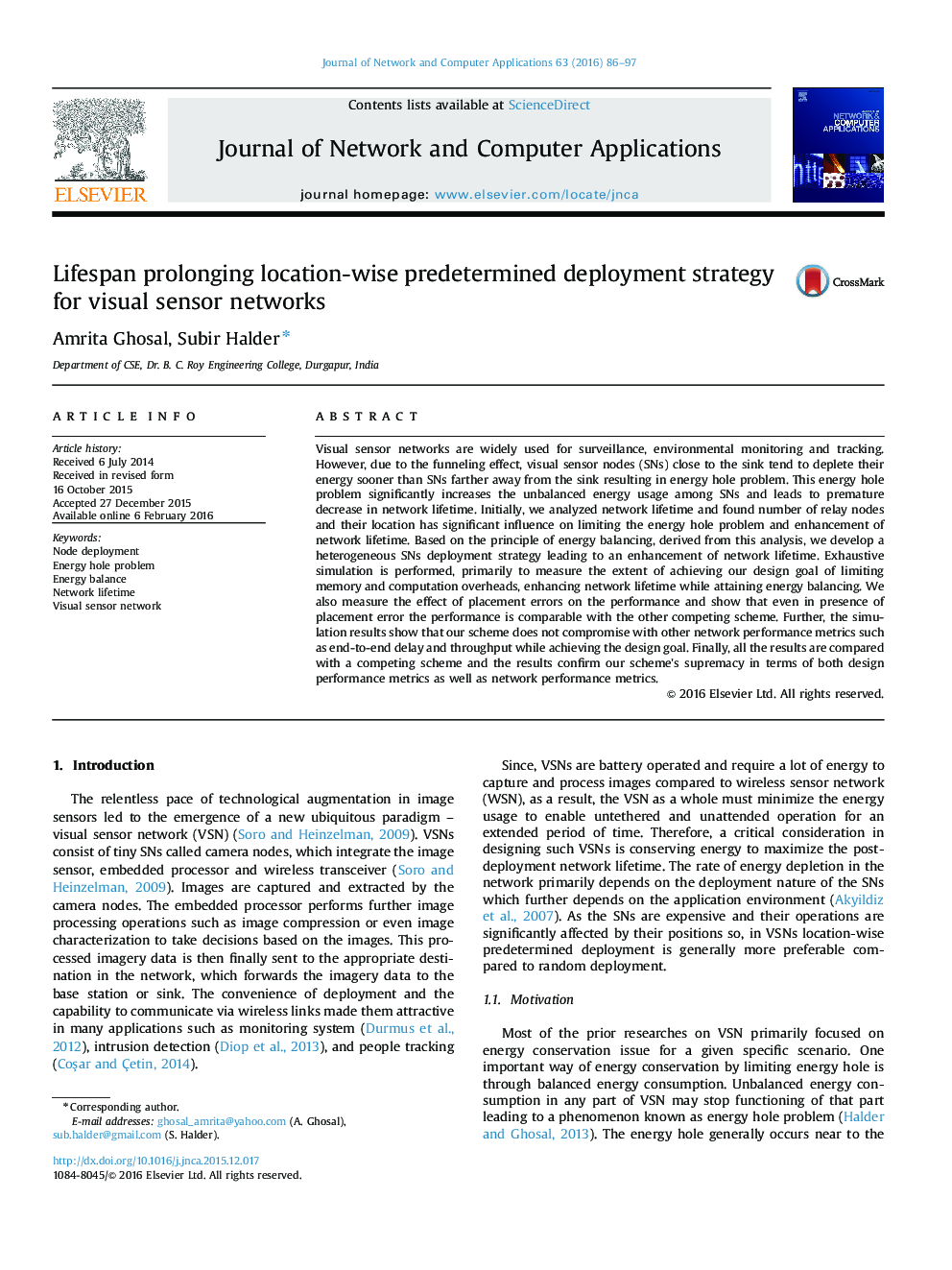| Article ID | Journal | Published Year | Pages | File Type |
|---|---|---|---|---|
| 457118 | Journal of Network and Computer Applications | 2016 | 12 Pages |
Visual sensor networks are widely used for surveillance, environmental monitoring and tracking. However, due to the funneling effect, visual sensor nodes (SNs) close to the sink tend to deplete their energy sooner than SNs farther away from the sink resulting in energy hole problem. This energy hole problem significantly increases the unbalanced energy usage among SNs and leads to premature decrease in network lifetime. Initially, we analyzed network lifetime and found number of relay nodes and their location has significant influence on limiting the energy hole problem and enhancement of network lifetime. Based on the principle of energy balancing, derived from this analysis, we develop a heterogeneous SNs deployment strategy leading to an enhancement of network lifetime. Exhaustive simulation is performed, primarily to measure the extent of achieving our design goal of limiting memory and computation overheads, enhancing network lifetime while attaining energy balancing. We also measure the effect of placement errors on the performance and show that even in presence of placement error the performance is comparable with the other competing scheme. Further, the simulation results show that our scheme does not compromise with other network performance metrics such as end-to-end delay and throughput while achieving the design goal. Finally, all the results are compared with a competing scheme and the results confirm our scheme׳s supremacy in terms of both design performance metrics as well as network performance metrics.
